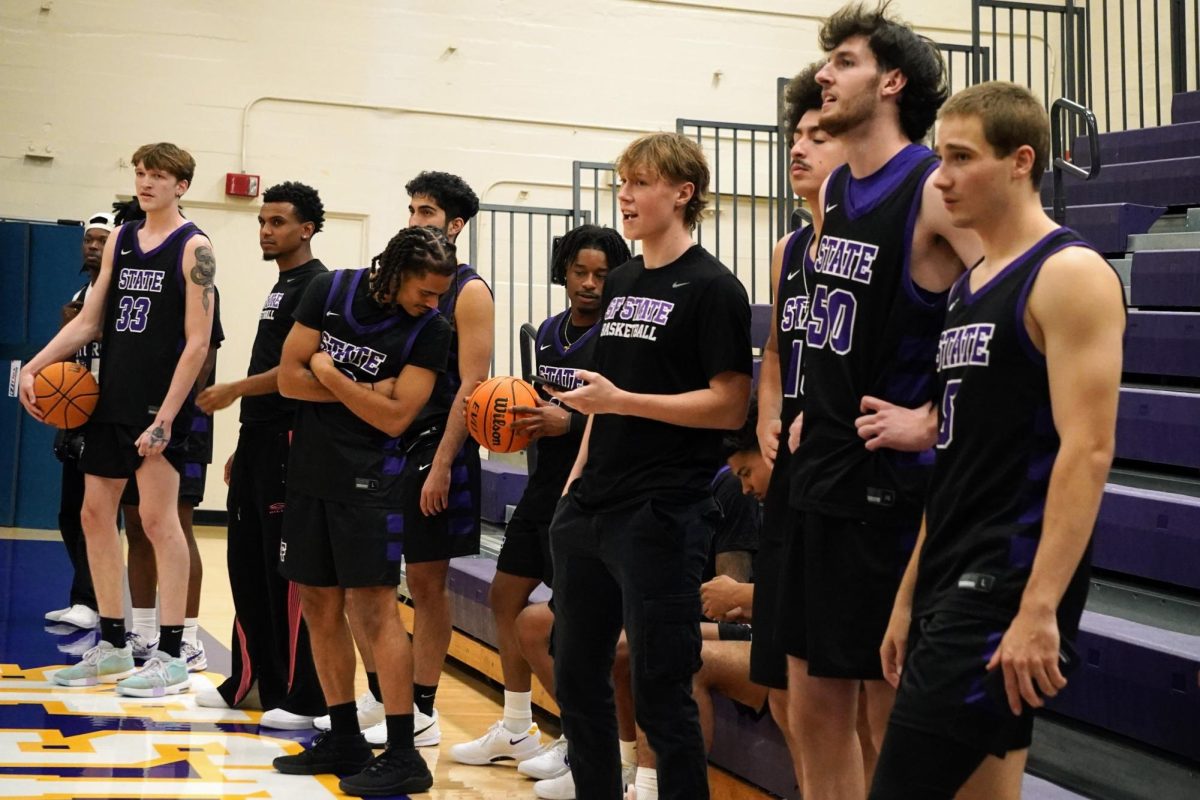
Cries of “bananeira,” “amazonas” and other Portuguese terms coalesced with traditional Brazilian instrumentals as members of SF State’s capoeira club flipped and kicked across the gymnasium floor during their Friday afternoon practice.
Capoeira is an Afro-Brazilian martial art that incorporatesthe combined elements of dance, acrobatics and music. Its distance from mainstream martial arts is what makes it unique, according to club treasurerKeith Suguitan.
“Capoeira mixes live music and dance with traditional martial arts movements,” Suguitansaid. “It started close to the 1800s and has since been one of the most unique and beautiful martial arts around the world.”
The club has been activefor five years, according to Suguitan.
Club vice president Adrei Torres said he encourages SF State students to join because it will improve them physically.
“It’s really good for your health. You’ll feel your body change — your body will become more flexible and stronger,” Torres said. “Before capoeira, I wasn’t able to do a handstand, and now I’m doing it super easily.”
Torres added that the music, team work and Brazilian culture embedded into capoeira are what set it apart from other martial arts.
Club member Jonathan Martin, who started training in capoeira more than five years ago, said itputs the art in martial arts.
“Capoeira is a music art; it’s a cultural art — it’s almost like any other art that seeks to express its culture with the body,” Martin said.
Martin said capoeira has influencedhim in a positive way.
“It impacted my sense of awareness and culture,” Martin said.

In addition tothe physical benefits of theart, capoeira has enabled members of the club to establish friendships with one another and meet new people, according to club safety officer Monica Chee.
“A positive impact capoeira has had in my life, beside getting me in better shape, is expanding my circles of friends,” Chee said.
The movements can be taughtindividually, but are not technicallycapoeira unless they involve coordination witha partner, according to Chee.
“You have to have a flow and rhythm with your partner — it’s like having a conversation with each other,” Chee said. “He or she is your partner whom you are kicking and dodging away from and constantly working around each other within a limited space.”
Chee said she believes more students would join capoeira if they seeit in person.
“It’s different from anything you probably ever seen, so it’s hard to explain; it’s better to show you,” Chee said.










Alan Ol. • Nov 16, 2015 at 10:02 am
I practice capoeira in Brazil. It seems to free the mind, and it was considered a crime to practice capoeira until 1930 (Bimba’s master was obligated to change the name of this art to “Regional martial art of Bahia”). Today everybody call it “capoeira regional” to distinguish it from “angolan capoeira”. The angolan capoeira was also created by the slaves in Brazil, but it has it name because they preserved the most antique techniques of this sport. The regional capoeira is more beautiful to see, because it has those acrobatics movements that we don’t see in other sports, unless in Olympic gym.